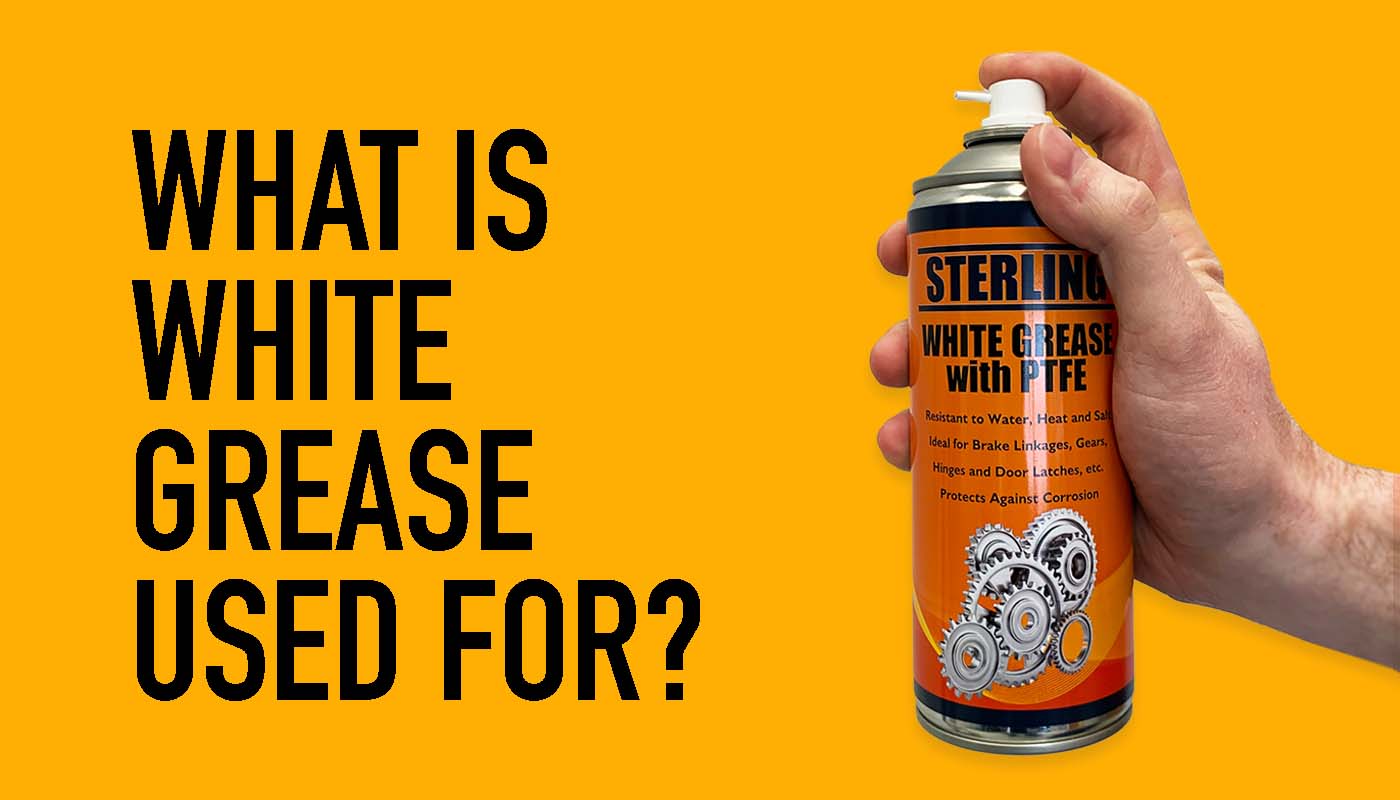White grease is used for the lubrication and protection of bolts, chains, hinges, brake linkages and other metal-on-metal moving parts. It is a great all rounder, used in the automotive and marine industries for lubrication of light to medium loads. It is heat, water and salt resistant and delivers excellent protection against corrosion and rusting.

WHAT IS WHITE GREASE?
Lubricating greases are manufactured by combining oil with a soap. Soap is added to oil to create a thick, viscous stable gel called a grease. This process basically gives the grease an added 'stickiness' compared with oil. It can adhere better to the item it is applied to. White grease is used to lubricate metal-on-metal applications. It is a grease that won't run-off and due to its excellent heat stability it won't melt or freeze. It stays in place for a long time, giving long-term protection against rust and corrosion.
READ NEXT
- How to Start Your Car On a Frosty Morning
- Correct Headlight Bulb: Halogen, LED or HID?
- Wiper Blades: Flat Blades v Standard Blades
WHAT IS WHITE LITHIUM GREASE?
Sometimes white grease is made by mixing a lithium based soap with an oil. This type of lithium grease adheres really well to metal objects. It demonstrates excellent lubrication under heavy loads and it is non-corrosive. It also boasts excellent temperature stability making it a very popular choice in the automotive industry. Lithium grease is the go to lubricant for CV joints in automobiles. It's heat resistance, heavy load tolerance and cost effectiveness make it a vert popular choice.
WHAT'S THE DIFFERENCE BETWEEN A GREASE AND AN OIL?
The main difference between a grease and an oil is that grease stays in place longer than an oil. Grease is preferred over oil in situations where a lubricating oil just wouldn't stay in place. The downside of a grease is that may not be suitable for use with delicate, light-weight moving parts - if its thick gel like properties could impact their movement or performance. Grease combines the lubrication of oil with the long lasting stickiness of grease.
SHOP AUTOMOTIVE GARAGE SUPPLIES - See Here
WHAT DOES THE GREASE COLOUR MEAN?
When choosing a grease for a particular job it is important to choose the correct grease based on its physical properties such as - load carrying capacity, mechanical stability, oxygen stability, water resistance, heat resistance and corrosion protection. Although greases come in a wide range of colours - white, black, blue, red, purple, green etc - the colour of the grease should not be used to assess its suitability for a particular job.
Although, what the colours signify differ from manufacturer to manufacturer. White grease is often used in applications where contact between the grease and food is a possibility. It can be seen in use in food processing and bottling factories.
ADVANTAGES OF USING GREASE:
- CLINGS TO SURFACES - remains in place for a long time for long term lubrication & protection
- SEALING - seals out water, salt and other contaminants
-
REGULAR REAPPLICATION UNNECESSARY - great for using on machines that are used infrequently and therefore lubrication may be overlooked
DISADVANTAGES OF USING GREASE:
- DELICATE MECHANISMS - grease can't be used on fine or fast moving mechanisms that would be impacted by the thick resistance of grease
- CAN BE MESSY - grease can be very messy and in certain applications oil is preferred to prevent moving parts flinging thick sticky grease around
View Our Range
- GREASE SPRAYS - Click Here
- GREASE NIPPLES - Click Here
- GREASE TUBS - Click Here


1 comment
DB
can it be used on a chain for a bike